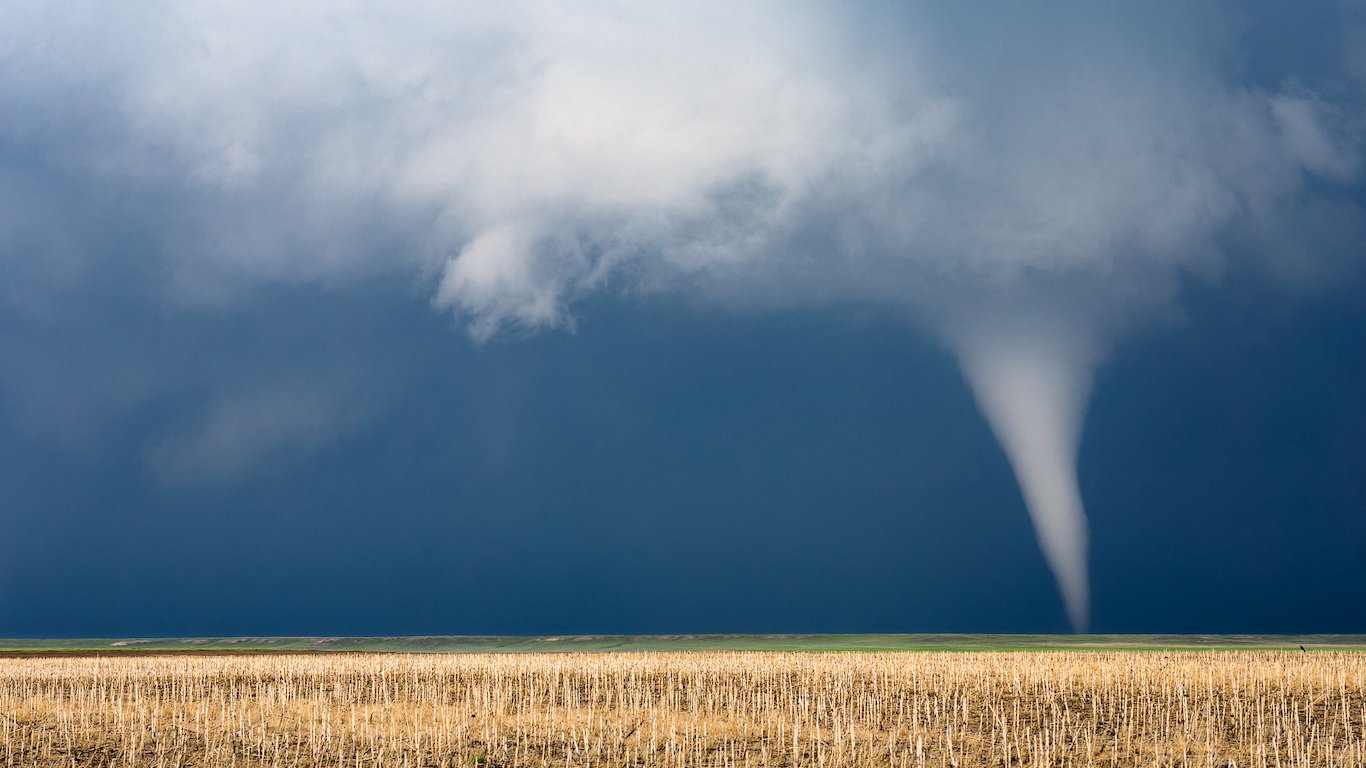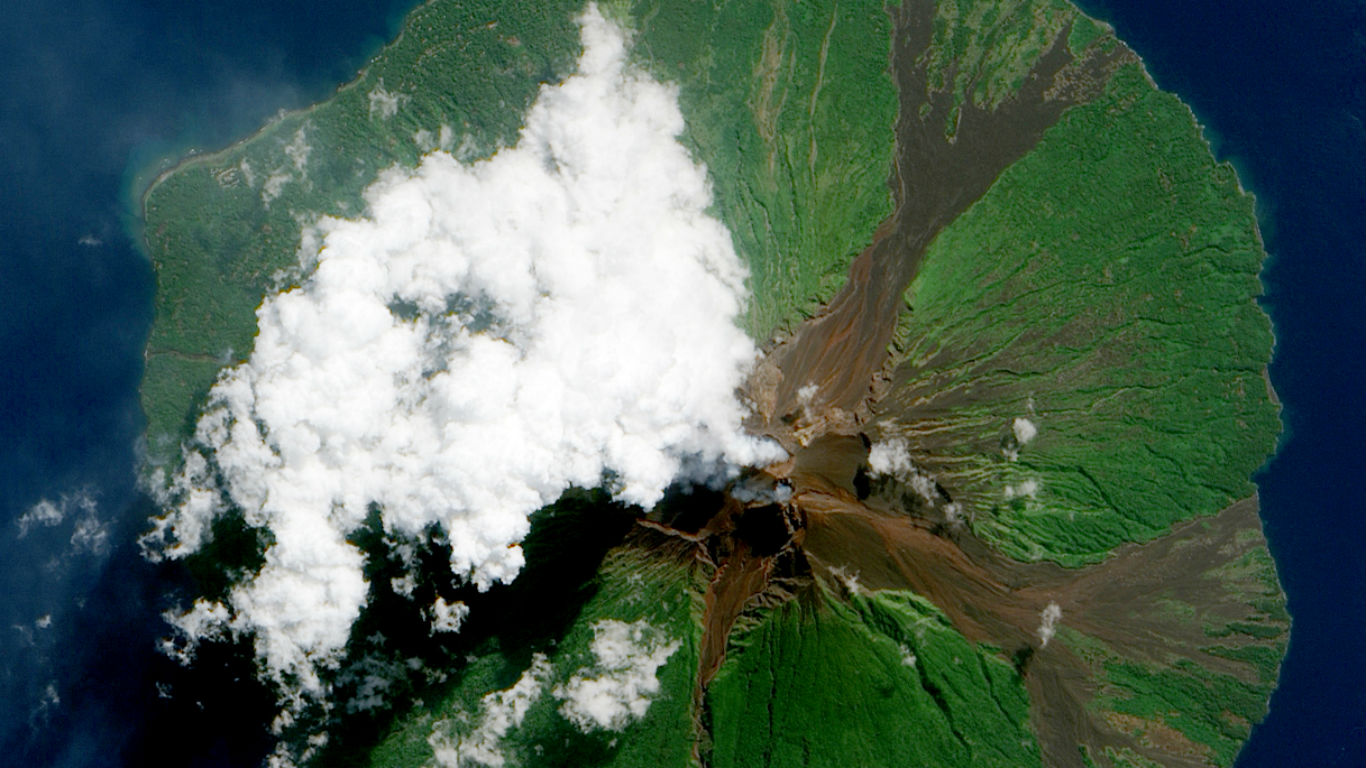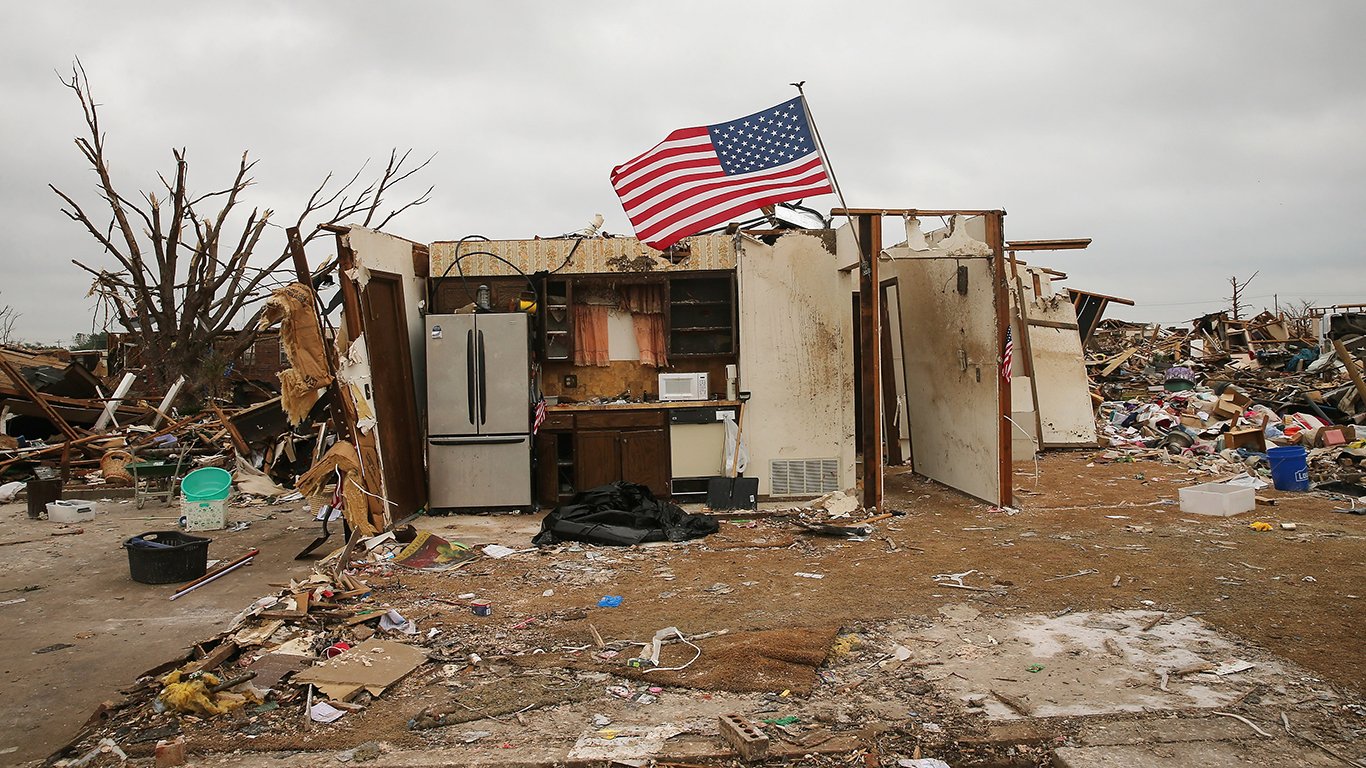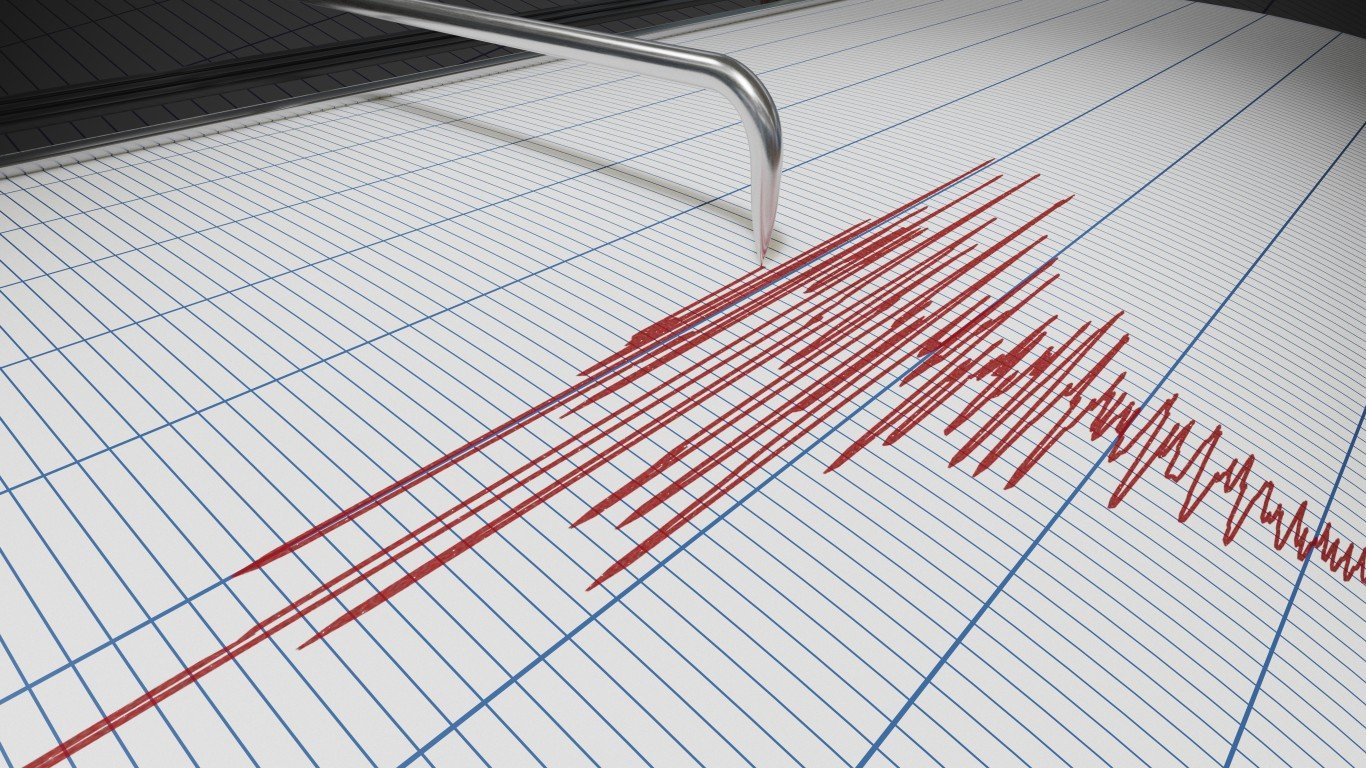

The U.S. Geological Survey defines an earthquake as “any sudden release of energy in the Earth’s crust that creates seismic waves.” Earthquakes can be caused by a variety of factors, including tectonic plate movement, volcanic activity, underground explosions, and – it has recently been proposed – fracking, the practice of injecting a mixture of water, sand, and chemicals at high pressure into shale and other rock formations to create fractures, enabling the release of oil and natural gas.
The Number of significant earthquakes in a given year can vary depending on a number of factors, including the location of active fault lines, the frequency of seismic activity, and the sensitivity of seismic monitoring equipment. (These are the most powerful earthquakes ever recorded.)
According to the USGS, every state experiences some level of seismic activity, but for many of them it is minimal; the ground-shaking is barely noticeable. The two states with the lowest level of such activity are Florida and North Dakota.
To determine which states are the most earthquake-prone, 24/7 Wall St. reviewed data from the USGS, ranking states in ascending order according to the agency’s data on the number of earthquakes registering 3.0 or above in the United States between the years of 2010 and 2015 (the last year for which records are complete). Only earthquakes occurring after 1900, when some degree of instrumental earthquake record-keeping came into play, are included.
The familiar Richter scale, which measures the magnitude of quakes, came into use in 1935. Magnitudes of earlier earthquakes are estimates based on reported damage and intensity. Since 1975, scientists have used a different measurement, the moment magnitude scale, which is based on the total moment release (a product of distance and force) of the earthquake. Because MMS measures are similar to Richter scale at smaller magnitudes, Richter numbers are still common and are used here.
America’s most earthquake-prone state by far is Alaska. In the No. 2 position, perhaps surprisingly, is Oklahoma – which has seen a dramatic increase in seismic events in recent years, most likely induced by oil and gas-related processes, including fracking.
Click here for more about the most earthquake-prone states in America.
Click here for a detailed methodology.
The earthquakes that occurred in the United States in 2022 were generally of low magnitude, meaning that they did not cause significant damage or injuries. However, there were a few exceptions, such as the 7.8-magnitude earthquake that struck Alaska in March 2022. This earthquake caused widespread damage and injuries and was the strongest earthquake to hit Alaska in over 50 years. (Here’s a list of the states where the most people were displaced by natural disasters last year.)
It is important to note, however, that the magnitude of an earthquake is not always an accurate indicator of the amount of damage it will cause. Other factors, such as the depth of the earthquake and the type of soil or rock it occurs in, can also affect the amount of damage, as well as its location – how close it is to population centers, how densely populated these areas are, and how much infrastructure exists.
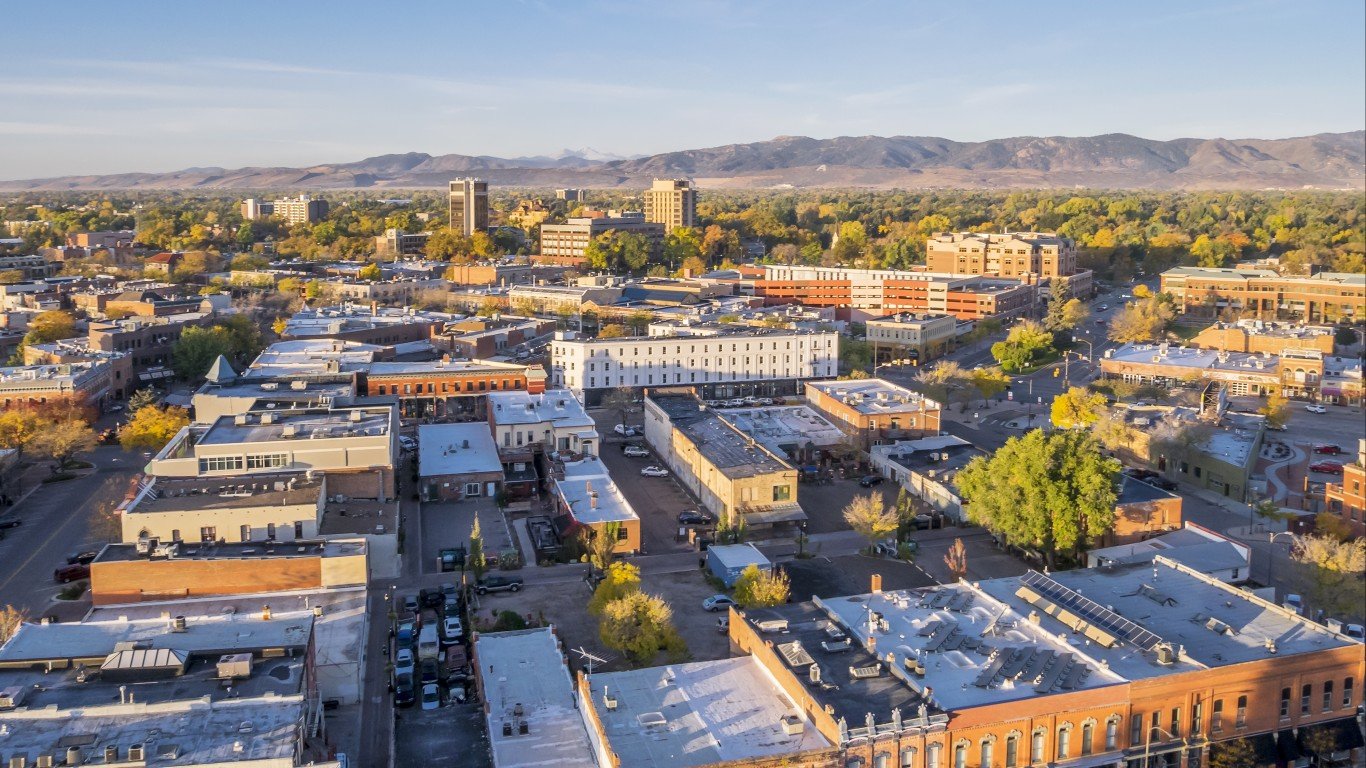
15. Colorado
> Number of earthquakes 3.0 or higher (2010-2015): 56
> Number of significant earthquakes (2022): 0
> Most powerful earthquake since 1900: 5.8 (Sept. 3, 2016)
> Population (2022): 5,839,926
The most significant seismic activity in Colorado is associated with tectonic activity along the Rocky Mountains. The western part of the state, particularly the region near the Colorado-New Mexico border, is where most of the seismic events occur. The state has experienced both small and moderate earthquakes in the past.
[in-text-ad]

14. Washington
> Number of earthquakes 3.0 or higher (2010-2015): 60
> Number of significant earthquakes (2022): 0
> Most powerful earthquake since 1900: 5.0 (March 13, 1967)
> Population (2022): 7,785,786
Washington state lies in the Cascadia Subduction Zone, where the Juan de Fuca Plate is being subducted beneath the North American Plate. This region is capable of producing powerful seismic events, including megathrust earthquakes, which can have significant impacts.

13. Arizona
> Number of earthquakes 3.0 or higher (2010-2015): 61
> Number of significant earthquakes (2022): 0
> Most powerful earthquake since 1900: 5.1 (July 28, 1975)
> Population (2022): 7,359,197
Arizona is generally considered to have a low level of seismic activity, though it is hardly immune to earthquakes. The most significant activity occurs in the northern part of the state, near the Arizona-Utah border, and is associated with the tectonic activity of the Colorado Plateau and the transition zone to the Basin and Range Province.

12. Arkansas
> Number of earthquakes 3.0 or higher (2010-2015): 68
> Number of significant earthquakes (2022): 0
> Most powerful earthquake since 1900: 5.6 (March 26, 1990)
> Population (2022): 3,045,637
Arkansas is situated in the New Madrid Seismic Zone, a fault system that extends across several states, including Arkansas, Missouri, Tennessee, and Kentucky. The most notable earthquake in Arkansas history occurred on Dec. 16, 1811, when a massive seismic event known as the New Madrid Earthquake struck the area with an estimated magnitude between 7.5 and 7.9 – so strong that it altered the course of the Mississippi River.
[in-text-ad-2]

11. Utah
> Number of earthquakes 3.0 or higher (2010-2015): 69
> Number of significant earthquakes (2022): 0
> Most powerful earthquake since 1900: 5.3 (May 16, 1984)
> Population (2022): 3,380,800
Utah sits on the boundary between the North American Plate and the Pacific Plate. It experiences frequent small to moderate earthquakes, particularly in the western part of the state near the Wasatch Fault Zone.

10. Texas
> Number of earthquakes 3.0 or higher (2010-2015): 83
> Number of significant earthquakes (2022): 2
> Most powerful earthquake since 1900: 7.4 (March 12, 1934)
> Population (2022): 30,029,572
Texas has seen an increase in earthquake activity in recent years, mainly attributed to oil and gas operations, including fracking. The most seismically active areas include the western and central parts of the state, including the Dallas-Fort Worth area and the Permian Basin.
[in-text-ad]
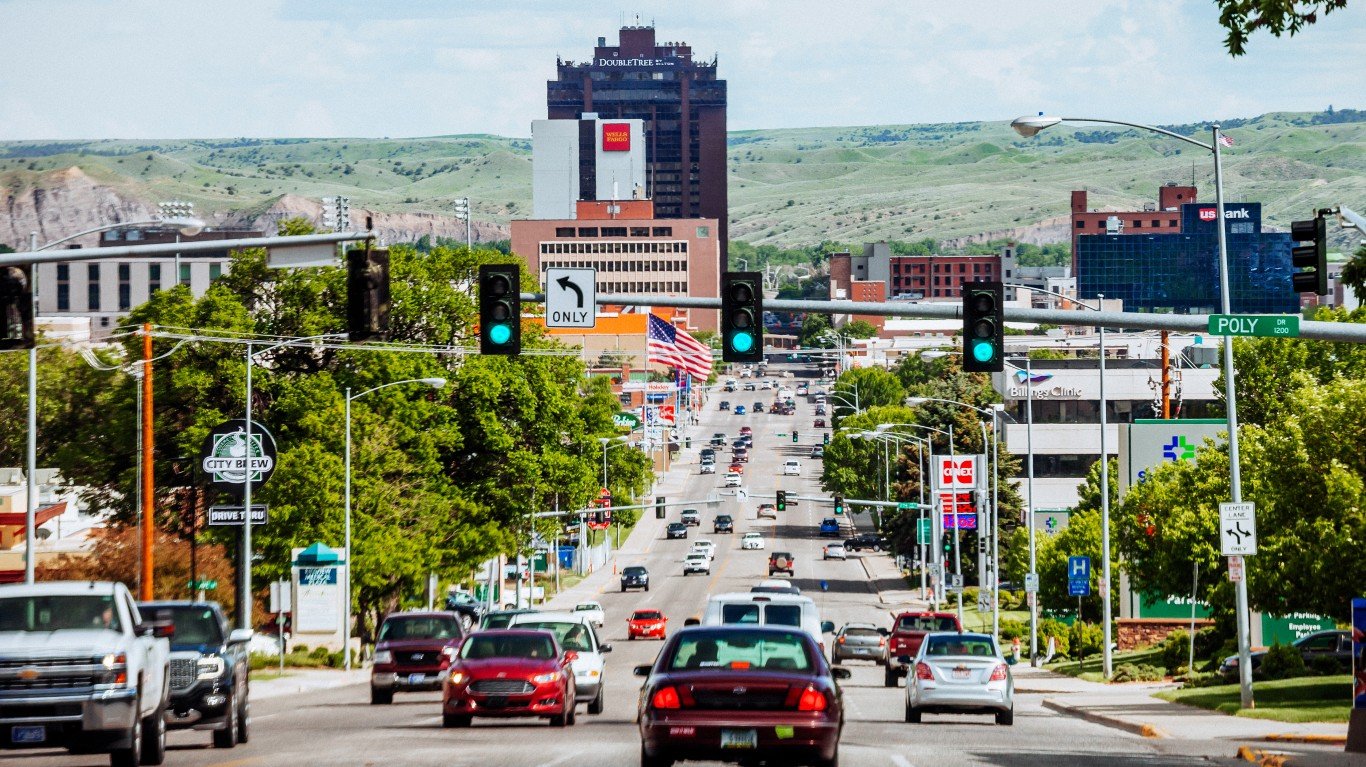
9. Montana
> Number of earthquakes 3.0 or higher (2010-2015): 89
> Number of significant earthquakes (2022): 0
> Most powerful earthquake since 1900: 7.1 (June 1, 1954)
> Population (2022): 1,122,867
Montana is situated in an active tectonic region, with seismic activity associated with the Intermountain Seismic Belt. Earthquakes in Montana are generally less frequent and less intense compared to some other states.

8. Idaho
> Number of earthquakes 3.0 or higher (2010-2015): 95
> Number of significant earthquakes (2022): 0
> Most powerful earthquake since 1900: 7.2 (July 17, 1917)
> Population (2022): 1,939,033
Idaho is part of the Intermountain Seismic Belt and experiences moderate seismic activity. The state has several active fault systems, including the Lost River Fault and the Teton Fault.

7. Kansas
> Number of earthquakes 3.0 or higher (2010-2015): 104
> Number of significant earthquakes (2022): 0
> Most powerful earthquake since 1900: 4.7 (June 9, 2018)
> Population (2022): 2,937,150
Kansas is within the Humboldt fault zone, which extends from southeastern Kansas into northeastern Oklahoma and is associated with a series of faults that formed during the Pennsylvanian and Permian periods, approximately 300 million to 250 million years ago. The Humboldt fault zone is believed to be the result of crustal stresses associated with the uplift of the Ozark Plateau. It is considered relatively inactive today.
[in-text-ad-2]

6. Hawaii
> Number of earthquakes 3.0 or higher (2010-2015): 200
> Number of significant earthquakes (2022): 4
> Most powerful earthquake since 1900: 7.7 (Nov. 29, 1975)
> Population (2022): 1,440,196
While more commonly associated with volcanic activity, Hawaii is also susceptible to earthquakes. The movement of magma and the presence of active volcanoes can trigger seismic events, especially on the Big Island.
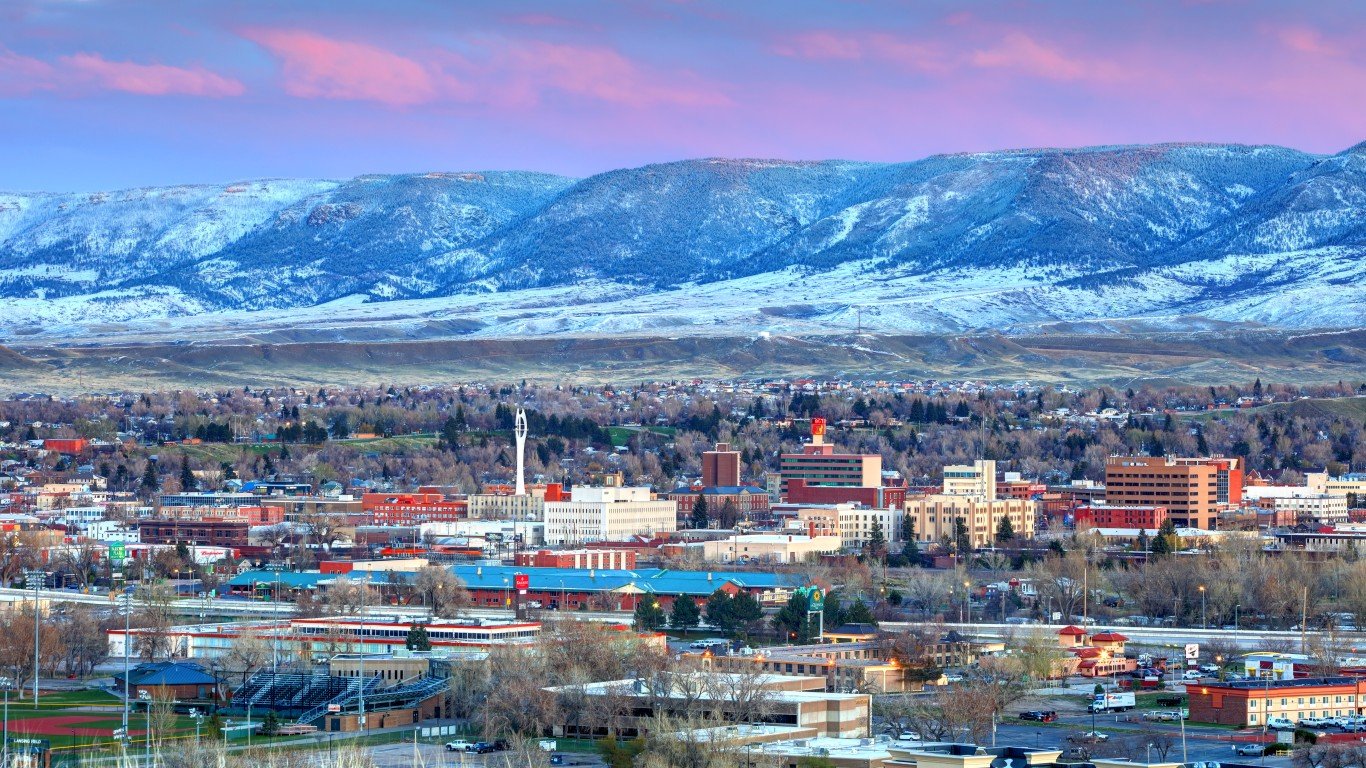
5. Wyoming
> Number of earthquakes 3.0 or higher (2010-2015): 508
> Number of significant earthquakes (2022): 0
> Most powerful earthquake since 1900: 7.0 (Feb. 28, 1949)
> Population (2022): 581,381
Wyoming is located within the Intermountain Seismic Belt and experiences occasional seismic activity. The Teton Fault, located in the northwestern part of the state, is a significant seismic feature.
[in-text-ad]

4. Nevada
> Number of earthquakes 3.0 or higher (2010-2015): 513
> Number of significant earthquakes (2022): 0
> Most powerful earthquake since 1900: 6.8 (March 26, 1993)
> Population (2022): 3,177,772
Nevada has numerous active fault lines, including the Walker Lane, which is capable of producing moderate to large earthquakes. The city of Las Vegas and surrounding areas are located in close proximity to fault lines, increasing their risk from seismic activity.

3. California
> Number of earthquakes 3.0 or higher (2010-2015): 1,545
> Number of significant earthquakes (2022): 14
> Most powerful earthquake since 1900: 7.8 (April 1, 1946)
> Population (2022): 39,029,342
California is known for its high seismic activity and was the most earthquake-prone state in the continental U.S. until it was overtaken by Oklahoma, where many quakes are likely now caused by oil and gas activity, including fracking. The San Andreas Fault and other active fault lines run through the Sunshine State, making it susceptible to particularly large and destructive quakes.

2. Oklahoma
> Number of earthquakes 3.0 or higher (2010-2015): 1,714
> Number of significant earthquakes (2022): 1
> Most powerful earthquake since 1900: 7.9 (Oct. 17, 1989
> Population (2022): 4,019,800
Although not traditionally considered a highly seismic region, Oklahoma has experienced a surprising increase in earthquake activity in recent years – astonishingly, putting it ahead of California, which has always been one of the two most earthquake-prone states. This rise in seismicity has been attributed to oil and gas production processes, including fracking, which is the injection practice associated with oil and gas production.
[in-text-ad-2]

1. Alaska
> Number of earthquakes 3.0 or higher (2010-2015): 9,020
> Number of significant earthquakes (2022): 10
> Most powerful earthquake since 1900: 9.2 (March 27, 1964)
> Population (2022): 733,583
Alaska experiences frequent earthquakes due to its location along the tectonic boundary between the Pacific Plate and the North American Plate. The state has a history of significant seismic events, including the 1964 Great Alaska Earthquake, the most powerful earthquake recorded in U.S. history.
Methodology
To determine which states are the most earthquake-prone, 24/7 Wall St. reviewed data from the USGS, ranking states in ascending order according to the agency’s data on the number of earthquakes registering 3.0 or above in the United States between the years of 2010 and 2015 (the last year for which records are complete).
The number of significant earthquakes in each state in 2022 also comes from the USGS, which defines significant earthquakes based on a combination of magnitude, number of “Did You Feel It?” responses, and PAGER alert level (PAGER stands for Prompt Assessment of Global Earthquakes for Response, an automated system that uses data from remote sensors to rapidly estimate the scope and impact of earthquakes around the world). Information on fault lines and seismic zones comes from the USGS and the National Park Service.
Population figures came from the Census Bureau’s Population And Housing Unit Estimates for July 2022.
Sponsored: Want to Retire Early? Start Here
Want retirement to come a few years earlier than you’d planned? Orare you ready to retire now, but want an extra set of eyes on your finances?
Now you can speak with up to 3 financial experts in your area for FREE. By simply clicking here you can begin to match with financial professionals who can help you build your plan to retire early. And the best part? The first conversation with them is free.
Click here to match with up to 3 financial pros who would be excited to help you make financial decisions.
Thank you for reading! Have some feedback for us?
Contact the 24/7 Wall St. editorial team.
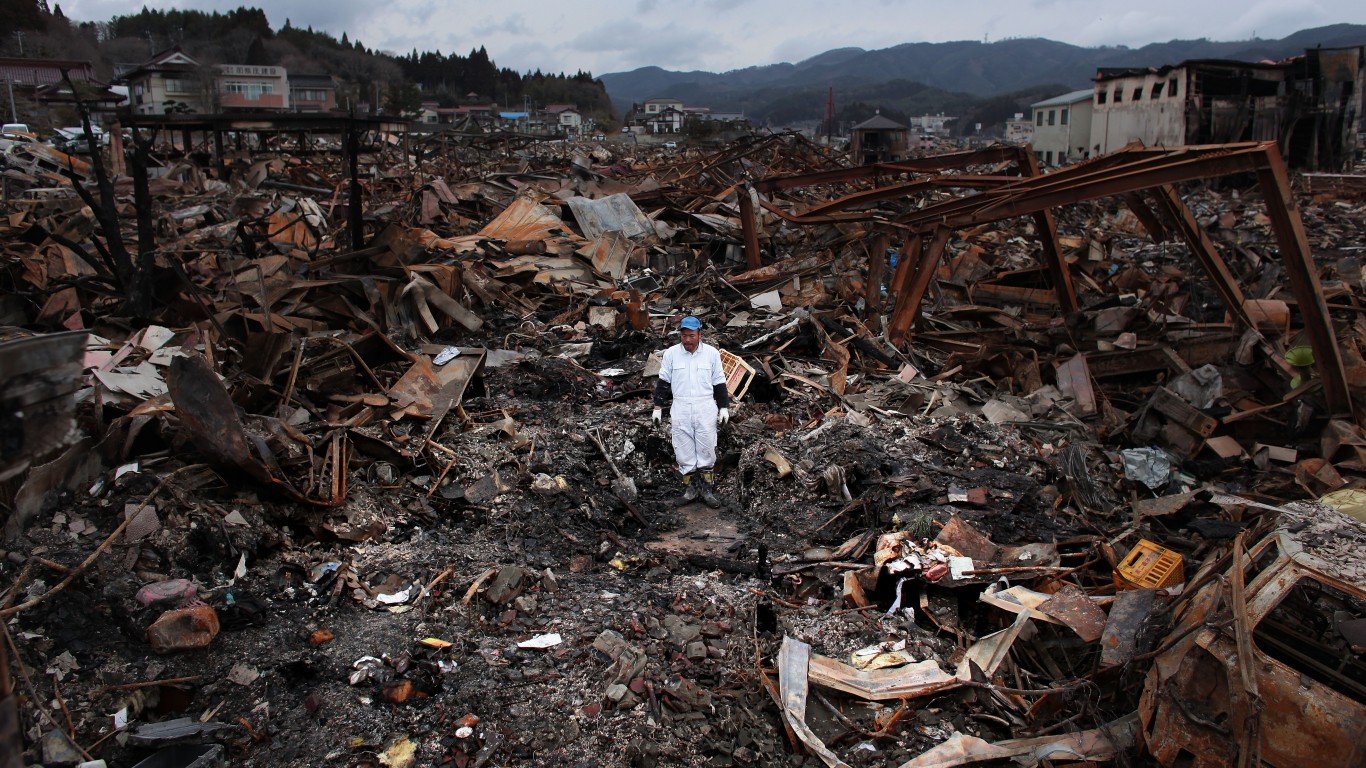 24/7 Wall St.
24/7 Wall St.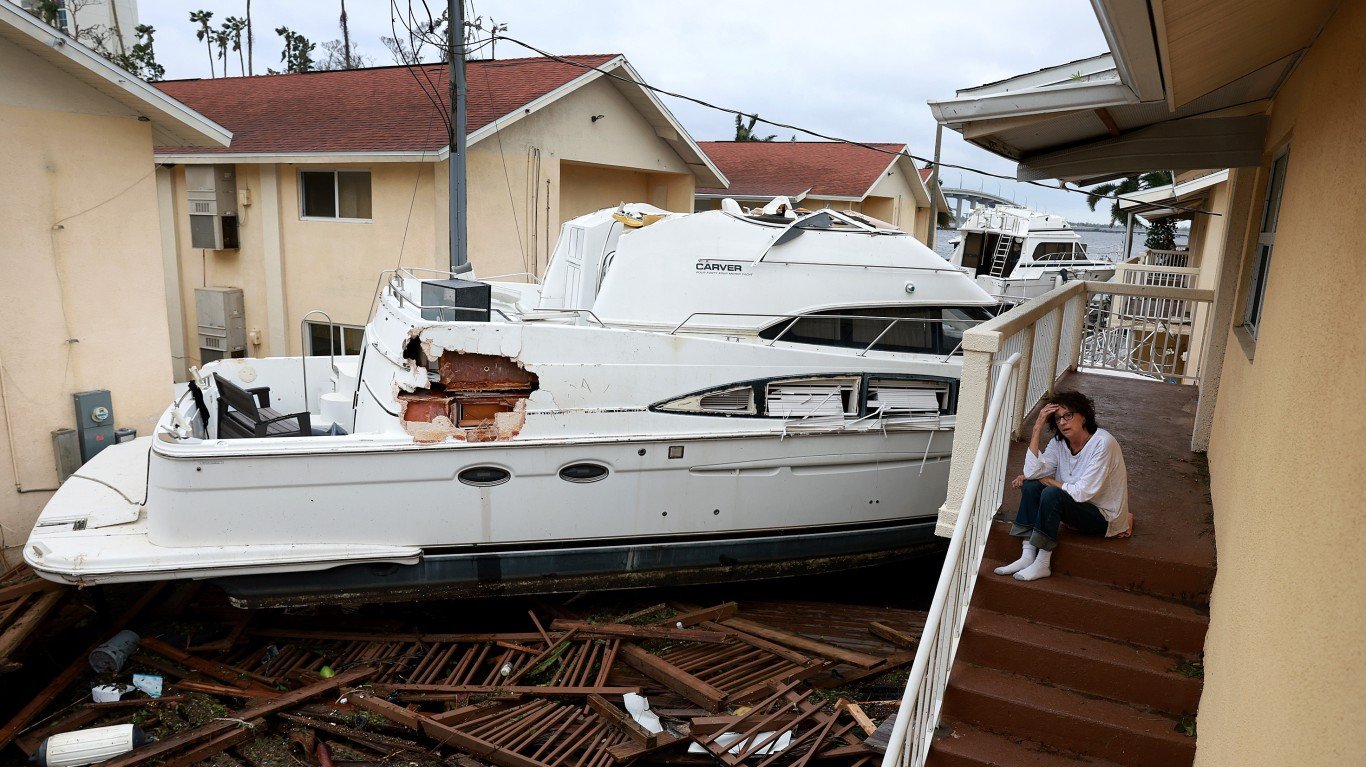 24/7 Wall St.
24/7 Wall St.